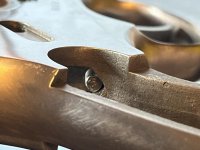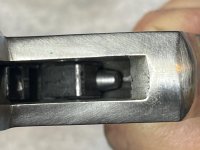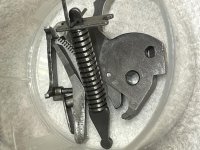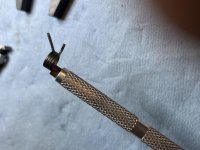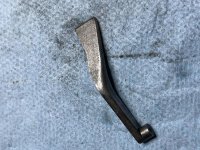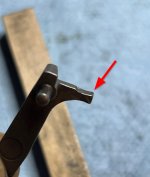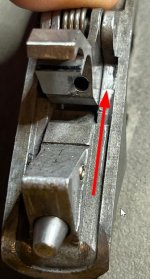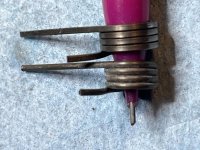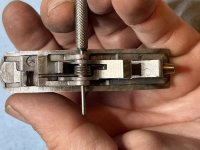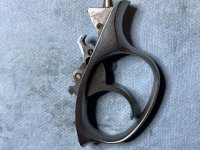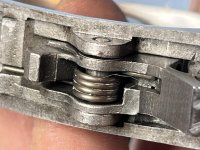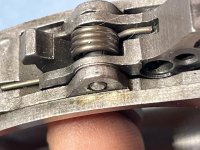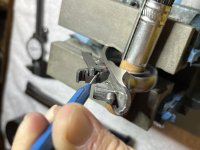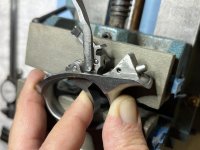Once I was satisfied that the push-off was not going to be a further issue, it was time to tear down the rest of the gun.
This time I discovered something. Everyone else in the world probably knew this already and I've just been slow on the uptake, but I apparently have been removing the trigger group from Ruger revolvers that wrong/hard way for 30 years. I've always gone in from the back, through the grip frame, with a punch and pushed on the plunger from that direction. It always works, but it usually takes a try or two because the punch slips off the plunger.
This go 'round I took some extra time to look at the mechanism and an idea hit me. Way back in the late 1900's when I was working on the counter in an auto parts store we were always given these goofy little screwdrivers as promo items. Small handle, square shaft, the logo of whatever company wanted more of our business at the moment on the handle, and a pen clip so that it would fit into your shirt pocket and tear a hole in your shirt when you bent over and/or stab you when you pulled a heavy box down off of a shelf. Did I still have one of those laying around?
I did. And as a bonus, it actually had a hollow ground tip. Would this goofy thing fit in through the hammer window at the top of the frame and reach the plunger? It sure did, and the square shaft mated up with the frame perfectly. Rock the goofy screwdriver back and bloop, there's a trigger assembly in my hand.
As the great philosopher Bugs Bunny would say, "What a maroon." All this time...........
This time I discovered something. Everyone else in the world probably knew this already and I've just been slow on the uptake, but I apparently have been removing the trigger group from Ruger revolvers that wrong/hard way for 30 years. I've always gone in from the back, through the grip frame, with a punch and pushed on the plunger from that direction. It always works, but it usually takes a try or two because the punch slips off the plunger.
This go 'round I took some extra time to look at the mechanism and an idea hit me. Way back in the late 1900's when I was working on the counter in an auto parts store we were always given these goofy little screwdrivers as promo items. Small handle, square shaft, the logo of whatever company wanted more of our business at the moment on the handle, and a pen clip so that it would fit into your shirt pocket and tear a hole in your shirt when you bent over and/or stab you when you pulled a heavy box down off of a shelf. Did I still have one of those laying around?
I did. And as a bonus, it actually had a hollow ground tip. Would this goofy thing fit in through the hammer window at the top of the frame and reach the plunger? It sure did, and the square shaft mated up with the frame perfectly. Rock the goofy screwdriver back and bloop, there's a trigger assembly in my hand.
As the great philosopher Bugs Bunny would say, "What a maroon." All this time...........

